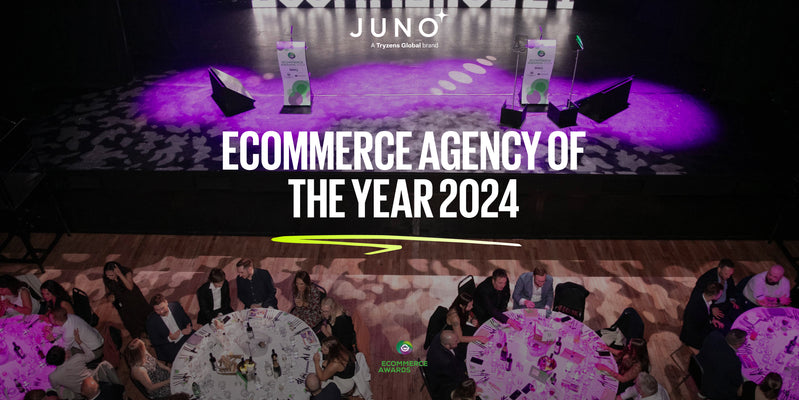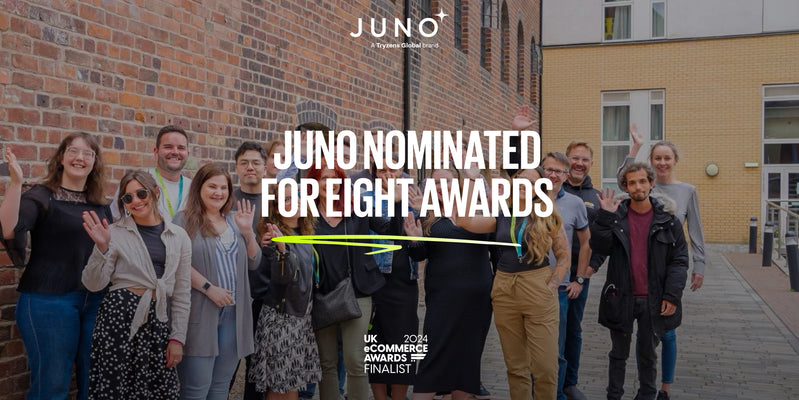Mar 13,2019 Shopify API Ecommerce
Our takeaways from Women in Tech

Nottingham is a vibrant, growing city, with hundreds of different kinds of businesses and industries. Out of this variety has grown a thriving tech community, which holds a host of events across the city to inspire both newbie and seasoned techies.
One of our favourite events to come out of Nottingham’s technology community is Women in Tech (WiT), a monthly meetup for women from all areas of technology. Designed to be an inclusive, safe space, these events are open to everyone – regardless of what gender you identify with.
WiT gives attendees a space to network, mingle, share ideas and learn in a comfortable setting. With events ranging from talks and workshops to social outings and fireside chats, WiT aims to not only encourage women to attend events, but also to lead them themselves.
The last Women in Tech talk, hosted on the 6th of March at the Nottingham Science Park, was sponsored by Salesforce – the leading customer relationship management (CRM) platform. Here are some of our key takeaways from this incredible event, including how you can apply these to your business.
Learning Salesforce with Alex Reed
The first talk was from Alex Reed, a Business Analyst for Salesforce partner Oe:gen. Alex is a huge advocate for Salesforce, and he talked about everything they do that’s made him fall in love with the business – from their work to reduce the gender pay gap in Silicon Valley to their inclusive Trailblazer community.
The main theme of Alex’s talk was how he used Trailhead, Salesforce’s free online learning platform, to become an expert in their software. Trailhead is designed to inspire life-long learning throughout your career, with guided learning paths, or ‘Trails’, that chart your course through Salesforce skills.
Trailhead has given Alex a passion for learning, something he never had through school. Since starting his courses on the platform, he’s achieved over 100 badges, helping him accelerate his career.
You can check out Trailhead here to start learning Salesforce for free.
How to be your own boss with Charlie Whyman
Our next talk was from Charlie Whyman, a Business & Marketing Strategist and LinkedIn Trainer. Almost two years ago, Charlie walked into her office and quit. No savings, no forward plan, no concrete idea of what she wanted to do. Describing herself as an ‘all-or-nothing’ kind of gal, she knew she’d have to make a big change and invest all her energy if she wanted to start a successful business. Now, Charlie helps other sole traders and small businesses start their journey and attract more customers.
In her talk, Charlie shared some pearls of wisdom she’s picked up from running her own business. One of the things she emphasised was the importance of talking to your ideal clients, asking them about their pain points, challenges and – most importantly – what kind of service they’re willing to pay for. In her experience, what a business needs and what they want to invest money in are two very different things. And focusing your time on a service that nobody wants is a fast way to run out of clients.
Aside from seasoned advice about finding your dream clients and dumping the negative ones, Charlie also shared her passion for being a “business for good”. That’s why she’s a member of B1G1, a non-profit organisation that enables businesses to contribute to charities and causes all over the world – for less than the price of a cup of coffee. All B1G1 projects are in line with the UN’s Sustainable Development Goals, allowing you to use your business exposure to be a force for good.
If you’d like to find out more about Charlie’s work, you can check out her website here.
Digital copy that converts with Robyn Davies
In a world that’s saturated with visual content, Copywriter Robyn Davies wanted to talk about why digital copy is the single most powerful way for brands to get their message across. In her talk about writing great copy, she illustrated three key ways to make sure your copy converts.
Her first tip was to make sure your copy tells a story. When you break it down, all stories and films follow the same basic plotline: the protagonist has a challenge, someone/something guides them to a solution, they engage with that solution, and they either succeed or fail. If your customer is the hero, as Robyn suggests, then your brand needs to be the guide. Create a narrative that demonstrates how your brand or product will solve your customers’ challenges and, most importantly, get them to visualise their life once the challenge is solved.
Robyn also detailed the importance of using ‘you’ in your writing, which she refers to as ‘You & Me’ copy. This is the idea of putting the focus on your customer and their needs, rather than talking about yourself and your brand. It’s how you can create a personal connection with your user, showing them empathy and understanding instead of talking down to them. The best way to do, she advises, this is to write as if there’s a conversation between you and your user. Read your copy aloud – if there’s anything in there that feels unnatural or stilted, scrap it.
Robyn’s final piece of advice on writing great copy was to focus on the micro – also known as UX copy. This is the short, contextual copy that makes the user perform the action you want – whether that’s to sign-up, add something to their basket or pay a bill. Good microcopy makes it almost impossible for a user to screw up – they should know exactly what action they need to take next. It can also be used to alleviate your users’ concerns, such as the UX copy on Airbnb that reminds users they ‘won’t be charged yet’ when they request to book a room. Robyn’s top tips for microcopy are: keep it concise, alleviate fears and match the tone of the rest of the website.
If you’re interested in talking to Robyn about her copywriting expertise, you can find her on LinkedIn here.
Public speaking with Adrian Peck
The final talk of the day was from Adrian Peck, a Speaking Trainer who helps people get over their fear of public speaking. With public speaking listed as the second greatest fear in Britain (after spiders…obviously), Adrian centred his talk around confidence – and how we can all fake it ‘till we make it.
Adrian’s talk will have hit home with anyone who’s ever given a presentation. He illustrated the things we do to try and calm ourselves down, which often make us look more nervous. From speaking quickly and using exaggerated arm movements to your physical stance on stage, Adrian broke down all of the little quirks that come out when we’re speaking publicly – as well as what we should do instead.
For your stance, Adrian advises you to stand with your feet facing forwards, hip-distance apart, as opposed to shifting your weight from foot to foot. He recommends keeping your hands firmly by your sides for the first 30 seconds of your talk, so that you avoid launching straight into gesticulating. He also shared some of his standard phrases for us to swipe, including “thank you very much, you’ve been a great audience, enjoy the rest of your day!”.
For an audience that is just starting to dip their toe into the world of networking and presenting, Adrian’s talk was a welcome guide on seeming confident – even if you're shaking in your boots. To find out how Adrian can help with your next presentation, you can check out his website here.
Look out for your next event
If you’re interested in the next Women in Tech event, you can find more details here. They’re always looking for new speakers, so if you want to try your hand at presenting, you can attend one of their ‘Lightning Talks’ – an event designed to give a platform for impromptu talks on any subject.


